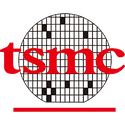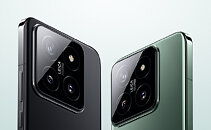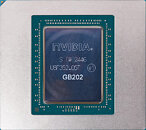
Reviewers Bemused by Restrictive Sampling of RX 9060 XT 8 GB Cards
Prior to early May, the existence of AMD's Radeon RX 9060 XT 8 GB GDDR6 model seemed to be in question. Discerning graphics card buyers tend to opt for larger pools of VRAM. In the modern era, 12 GB or 16 GB options are preferred in budget-to-mid-range segments. Additionally, media outlets are growing weary with a continued delivery of new-gen 8 GB offerings. Yesterday, Digital Foundry's Richard Leadbetter expressed a similar sentiment: "unhappily, AMD did not sample the 8 GB version of the (Radeon RX 9060 XT) card—perhaps because it knows the kind of reception it would receive from a tech press that are mostly united about the need for 8 GB cards to be shown the door." The site's Technology Editor was not alone in voicing frustrations about certain conditions that apply to international members of the media.
Yesterday, Linus Tech Tips (LTT) pulled back a major curtain. Their leaking of an alleged "official review guideline" demonstrates some level of exerting too much control. LTT shared a screenshot of AMD's "commitment to the press" (see below). On the subject of evaluators gaining access to the cheaper (baseline MSRP: $299) Navi 44 XT GPU-based card, a liaison stated: "as for the 8 GB models, AMD has enabled global reviews of both 16 GB and 8 GB models of the Radeon RX 9060 XT based on regional market demand. So in short, yes, there are some other global publications that are receiving 8 GB models for testing." VideoCardz's tracking of day one critiques reveals an almost complete seeding of 16 GB variants (starting at $349). Vitally, TechPowerUp's W1zzard will be reaching into his own pocket(s). As outlined in his reviews of various better equipped options: "since it wasn't possible to get an 8 GB model for review, everyone focused on 16 GB models. I'll buy one of course as soon as possible, to get you the crucial info how it performs." Back in April, (on his own dime) TPU's resident GPU critic acquired a Gainward GeForce RTX 5060 Ti 8 GB retail specimen. At the time, NVIDIA caught plenty of flak—only GeForce RTX 5060 Ti 16 GB models were distributed to reviewers and influencers.
Yesterday, Linus Tech Tips (LTT) pulled back a major curtain. Their leaking of an alleged "official review guideline" demonstrates some level of exerting too much control. LTT shared a screenshot of AMD's "commitment to the press" (see below). On the subject of evaluators gaining access to the cheaper (baseline MSRP: $299) Navi 44 XT GPU-based card, a liaison stated: "as for the 8 GB models, AMD has enabled global reviews of both 16 GB and 8 GB models of the Radeon RX 9060 XT based on regional market demand. So in short, yes, there are some other global publications that are receiving 8 GB models for testing." VideoCardz's tracking of day one critiques reveals an almost complete seeding of 16 GB variants (starting at $349). Vitally, TechPowerUp's W1zzard will be reaching into his own pocket(s). As outlined in his reviews of various better equipped options: "since it wasn't possible to get an 8 GB model for review, everyone focused on 16 GB models. I'll buy one of course as soon as possible, to get you the crucial info how it performs." Back in April, (on his own dime) TPU's resident GPU critic acquired a Gainward GeForce RTX 5060 Ti 8 GB retail specimen. At the time, NVIDIA caught plenty of flak—only GeForce RTX 5060 Ti 16 GB models were distributed to reviewers and influencers.


























































































